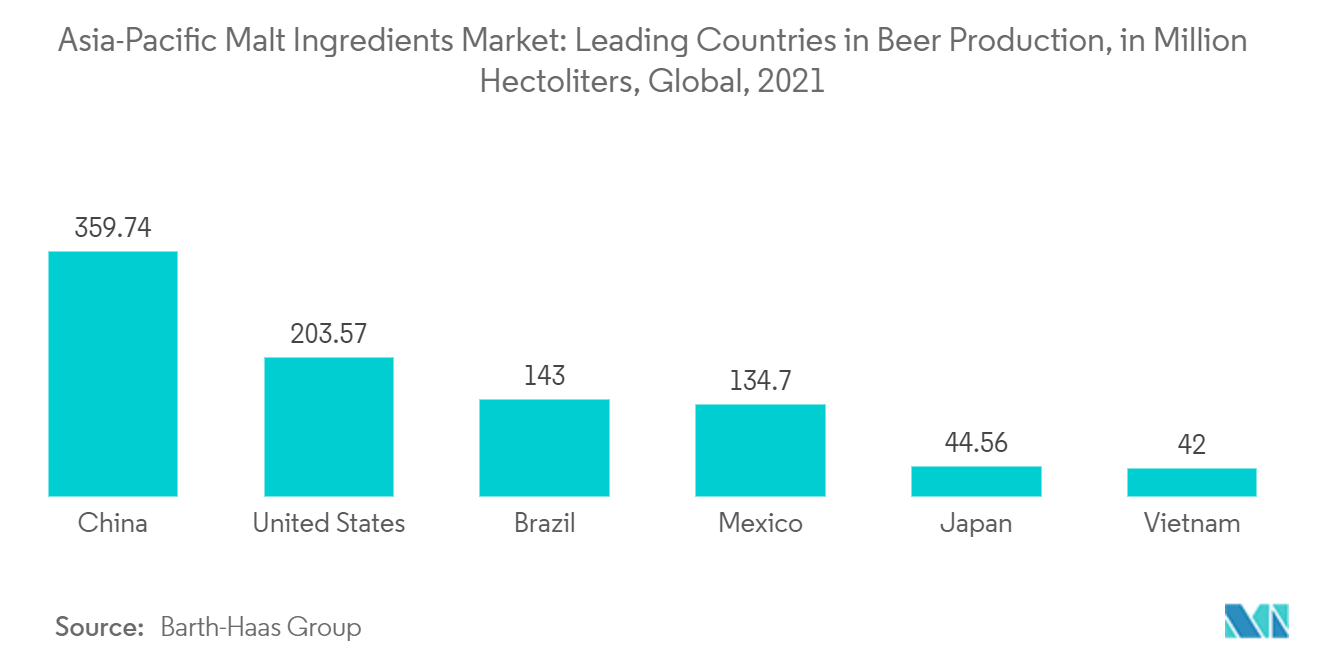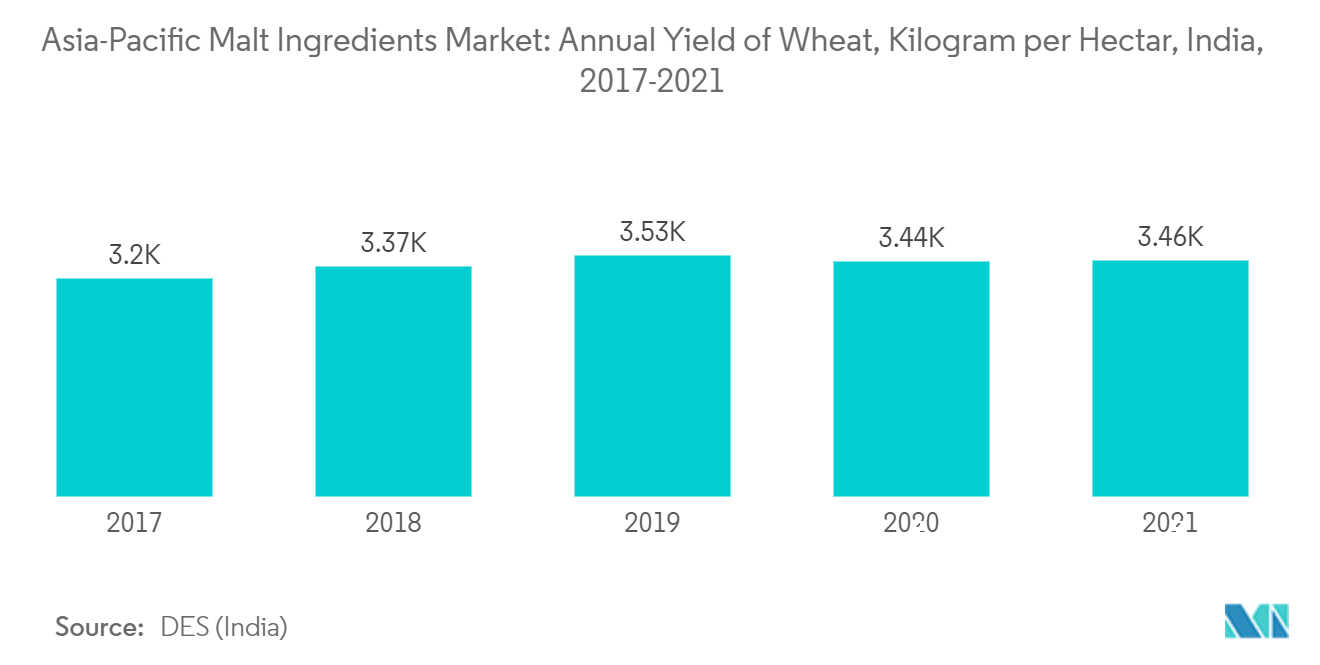Market Trends of Asia-Pacific Malt Ingredient Industry
This section covers the major market trends shaping the APAC Malt Ingredient Market according to our research experts:
Growing Popularity of Craft Beer
The demand for the craft brewing and distilling industries has experienced significant growth during the past few years. Consumers across Asia-Pacific have been seeking distinctive and flavorful beer, which has been pushing the market for malt ingredients in the beer market space. Moreover, the increasing development of microbreweries and the growing production of craft beer have led to a growing demand for specialty malts. For instance, according to World Bank data, in China, 1.4 billion people consume beer every year. According to an Australian craft beer survey, in 2020, the highest share of Australian craft beer drinkers was aged between 30 and 39, at around 40%. The statistics also show that soon, craft brewers are expected to consume most of the malt used by the brewing industry within the next five years, thereby driving the market growth of malt ingredients.
Also, the leading malt manufacturers have been providing a wide range of malt varieties suiting various requirements of craft breweries. For instance, Cargill Inc. offers a range of craft malts, including base malts, kilned caramel malts, and roasted malts, in varying color and flavor profiles.
Thus, craft malting has been popular in the marketplace as microbreweries search for unique, consumer-capturing brews that no other breweries can offer.

The Indian Malt Market is Likely to Foster the Growth of the Asia-Pacific Malt Ingredient Market
The end users of malt and malt extracts are the breweries (for beer production), distilleries (for the manufacture of premium quality whisky), food (for malted milk foods, bakery, biscuits, confectionery, chocolate powder, cornflakes, imitation coffee, baby food, etc.), pharmaceuticals (for tonics, health foods, and slim diets), and other end users (such as pet foods and medium for bacteria cultivation). In India, the growth in the rate of consumption of processed and convenience food products has contributed significantly to the sales of malt ingredients. The increased importance of malt extracts as functional ingredients in the formulation of confectionary and nutritional drinks on account of their vitamin B, essential amino acid, and fiber content is driving the demand for malt ingredients in the country.
Barley, having the major share among the malt ingredients, has its production confined to the northern states of India. However, the unavailability of quality malt increases the import of malt extracts from other countries to India. Thus, India is looking to import one million tonnes of Australian barley every year, as per Grain producer Australia (GPA), which is expected to meet the rising demand and result in an alcohol price drop in the country. Beer, whiskey, and flavored alcoholic beverages benefit from the trade deal as the reduction in production cost would ultimately increase the revenue.
Furthermore, leading companies are involved in the extensive research and development of different innovative products and revamping their old offerings with new ingredients. For instance, Heinz Power Sprouts, which supplemented Complan in the malt food segment, initially used barley malt and is now including ragi in its malt drinks. Also, Coca-Cola offers a non-alcoholic malt drink under the brand name 'Barbican'.

